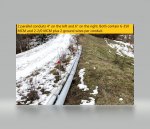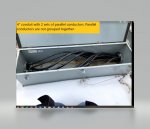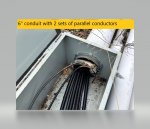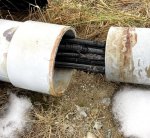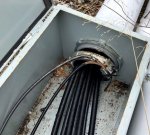Got a quick question about parallel conductors. I know the the general rules same size conductors all terminated the same on the ends. Came across a job today where there was one 4" PVC conduit with 2-sets of 350 MCM copper plus 2- 2/0 copper for a neutral and one 6" PVC conduit with 2-sets of 350 MCM copper plus 2- 2/0 copper for a neutral. This is about an 800' run on a landfill cap. MV transformer at the base of the hill and terminating at a 1000 Amp panelboard on top. Is this legal per the code? I cannot see how the conductors can be grouped together within the conduits. Also there are several boxes along the way where the conductors are not grouped.
Any input would be appreciated.
Any input would be appreciated.

